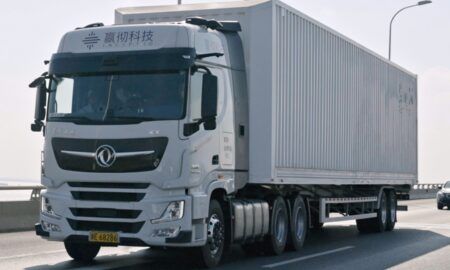Australia’s first fully driverless and electric shuttle bus has started the on-road stage of its trial in the city of South Perth in Western Australia.
The trials have been organized by the RAC (Royal Automobile Club), which has re-branded the French-made Navya ARMA autonomous shuttle bus as the ‘Intellibus’. It will carry passengers and interact with traffic, parked cars, cyclists and pedestrians as it travels along South Perth Esplanade between the Old Mill, near the Narrows Bridge, and Sir James Mitchell Park. Since the shuttle’s arrival in the state of Western Australia (WA) in April, the RAC has been working with the State Government, specialist technicians, and the vehicle manufacturer, Navya, to undertake significant testing of the shuttle in a closed environment at the RAC’s DTECH research facility. The electric shuttle seats 11 passengers and has a maximum speed of 28mph (45km/h), but during trials it will be restricted to 15mph (25km/h).
RAC Group chief executive officer, Terry Agnew, said, “Western Australia is leading the way in exploring the possibilities of driverless vehicle technology, with the RAC Intellibus trial set to be the first in the country, and among the first in the world. This trial is an Australian-first, and will be a real trial incorporating members of the public travelling on public roads. We anticipate this first step in exploring driverless technology will start a conversation on further trials, research and collaboration, which will increase WA’s understanding of how driverless vehicles can integrate into our transport system. The trial will help WA develop a roadmap of changes that will need to occur for driverless vehicles to safely transition on to our roads, and become an integrated part of our transport system. The Intellibus will make RAC members and the broader WA community some of the first people in the world to experience a driverless vehicle in action.”
City of South Perth Mayor, Sue Doherty, said, “The South Perth foreshore is a superb location for the trial. The City of South Perth is pleased to offer support to this joint initiative of the RAC and the State Government. In the future, this innovative form of public transport has the potential to help alleviate traffic congestion, by reducing the number of vehicles on the road, and at the same time having a positive impact on the environment.”
The RAC recently surveyed almost 1,000 Western Australians on how they feel about driverless technology, with almost half (46%) saying that they think it will result in less traffic congestion; 70% saying it will give more freedom and independence to the ageing and those with mobility difficulties; and more than half (53%) saying it will result in fewer car crashes and reduce severity of crashes. A further 60% said it will mean daily travel time can be used more effectively and productively doing other activities.




